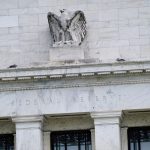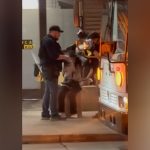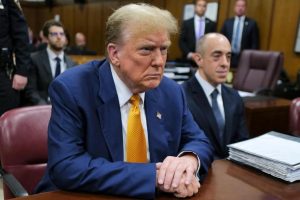But in a building with good air exchange and filtration (and there are multiple ways to get that, including letting in fresh air from outside, having MERV-13 filters in the building HVAC system, and adding portable filters), it would be much less of a concern who was or wasn’t wearing a mask—though, to be clear, masking would remain a very good idea. In one study, “The addition of two HEPA air cleaners that met the Environmental Protection Agency (EPA)–recommended clean air delivery rate (CADR) (5) reduced overall exposure to simulated exhaled aerosol particles by up to 65% without universal masking. Without the HEPA air cleaners, universal masking reduced the combined mean aerosol concentration by 72%. The combination of the two HEPA air cleaners and universal masking reduced overall exposure by up to 90%.” Masks are more effective, by those numbers, but if the air in a room is being effectively cleaned, you don’t have to worry as much about the person with their mask resting under their nose, or the person with the single layer of fabric, never mind all the people with no mask at all.
Another study run at a hospital COVID-19 ward found that with HEPA filtration, SARS-CoV-2 virus levels in the air were undetectable, and levels of other viruses, bacteria, and fungus were also reduced.
This works, and it should be a basic tactic with strong government leadership. Yet so many schools still don’t have adequate ventilation nearly three years into the pandemic. We’ve learned through the pandemic that many schools don’t have windows that open and that keeping classroom doors open is often banned in case of mass shooters, but in one survey of 420 schools, just 39% had upgraded their HVAC systems, and just 28% used portable air filters. The former is expensive and time-consuming, but the latter is relatively affordable (a homemade Corsi-Rosenthal box can cost well under $100 in materials) and there is federal money supposedly available for exactly that sort of improvement.
It’s not just schools, though. This should be on everyone’s list. Companies moving away from remote work could put HEPA filters in their office spaces and make it more likely that workers would be healthy enough to actually make it in to the office regularly. Restaurants could keep their staff and customers much safer by upgrading their air quality. It’s great that airplanes have excellent air exchange and filtration, but what about airports? So many businesses still have hand sanitizer prominently posted all over the place, which is fine—but I’d love for them to tell me what they had done about air quality.
So I bring my itty bitty air purifier with me to some places, like my rare indoor restaurant meal or when boarding a plane, hoping that having its small stream of filtered air near me will provide some benefit. But privatizing clean air is a terrible way to go and this should be a no-brainer, something everyone is hearing about all the time. The Biden administration has taken some steps toward emphasizing clean buildings, but when the administration’s plan calls for “Building public awareness around ventilation and filtration improvements to reduce disease spread in buildings” and then Biden’s holiday season preparedness tweet doesn’t mention the issue, there’s a disconnect, and one that’s failing the public and the public health.






